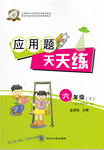10.Zero gravity looks cool.But what about the thing no one likes to talk about?Yes,that is right:going to bathroom.Zero gravity makes this everyday task quite a challenge.Astronauts have to be toilet-trained all over again.
The Apollo astronauts raised themselves off the seat of their chairs and stuck a clear plastic bag to their back sides with sticky strips.A second astronaut watched closely to be sure no waste matter escaped the seal.(You would not want that stuff floating around the cabin!) When the deed was done,the astronaut cleaned up with a piece of plastic attached to the inside of the bag,removed the bag,dropped a disinfectant pill in with the waste matter,and put the whole thing,sealed,into a special container.
Donald W.Rethke,an engineer for Hamilton Standard Space Systems,developed a more private way to answer nature's call:the space toilet.It is somewhat like the kind of toilet one would find on commercial airplanes---with unique adaptations for zero gravity,of course.For instance,it has thigh bars that keep the astronaut from floating off the seat.
The astronaut (male or female) defecates (排便) in a bag and urinates (排尿) in a hose(软管).Solid and liquid wastes are kept separated because at least 85% of the urine is recycled and,yes,after careful filtration(过滤),used for drinking and other purposes.(Water is always in demand in space.) A vacuum sucks the waste materials into the toilet,where the waste is compacted into hamburger-like patties for easy storage.Although not exactly like an earthbound visit to the toilet,it is at the very least much more private than in the early days of space travel.
50.According to the first paragraph,the lack of the gravity can turn something as simple asD into a major challenge.
A.eating
B.taking baths
C.sleeping
D.going to the restroom
51.How did astronauts use toilet systems in the Apollo days?A
A.None of the waste was separated as it is now.
B.Solid waste was compressed (压缩)and stored on board.
C.The toilet units used water to remove the waste through the system.
D.The astronauts each used their own private restroom.
52.To ensure the user remains seated,the toilet comes equipped withD
A.a plastic bag
B.a sticky strip
C.a wide hose
D.a thigh bar
53.What can be inferred from the fact that most of the astronauts'urine is recycled?B
A.The recycled water tastes better.
B.Water is limited on the space shuttle.
C.It is very convenient to get their urine recycled.
D.Space science includes recycling urine.
分析 本文是一篇说明文.文章主要说明了宇航员如何上厕所及如何处理宇航员的粪便,太空中没有重力使得日常生活中的上厕所变得很有挑战.宇航员们要经过特殊的培训.阿波罗宇航员如厕完要清理粘附在包里的塑料袋,放入消毒剂,把密封好的整个放入特殊容器中.Donald W.Rethke研发了更加私密的方法来解决宇航员如厕的问题.固体和液体废物分离,部分尿液会被循环利用.
解答 50-53 DADB
50.D 细节理解题.根据第一段中的"going to bathroom.Zero gravity makes this everyday task quite a challenge"对于太空中的宇航员来说,上厕所是一件很困难的事情,故选D.
51.A 推理判断题.根据第二段中的"The Apollo astronauts raised …,the astronaut cleaned up with a piece of plastic attached to the inside of the bag,…,and put the whole thing,sealed,into a special container"及第四段中的"…,Solid and liquid wastes are kept separated because at least 85% of the urine is recycled and,yes,after careful filtration(过滤),used for drinking and other purposes"可知,宇航员粪便处理方式是不一样的,阿波罗宇航员的粪便处理还没有能做到固体和液体分离,只是整个放在一个特殊容器中,故选A.
52.D 细节理解题.根据第三段中的"For instance,it has thigh bars that keep the astronaut from floating off the seat"可知,为了让宇航员坐在座位上,用‘thigh bars 大腿护栏'来固定宇航员,故选D.
53.B 细节理解题.根据第三段中的"85% of the urine is recycled and,yes,after careful filtration(过滤),used for drinking and other purposes.(Water is always in demand in space.)"可知,太空中的水是有限的,需要循环再利用,故选B.
点评 解答细节理解题时,一个常用的方法就是运用定位法,即根据题干和选项中的关键词从原文中找到相关的句子,与选项进行比较从而确定答案;推理判断题既要求学生透过文章表面文字信息推测文章隐含意思,又要求学生对作者的态度、意图及文章细节的发展作正确的推理判断,力求从作者的角度去考虑,不要固守自己的看法或观点.



 应用题天天练四川大学出版社系列答案
应用题天天练四川大学出版社系列答案